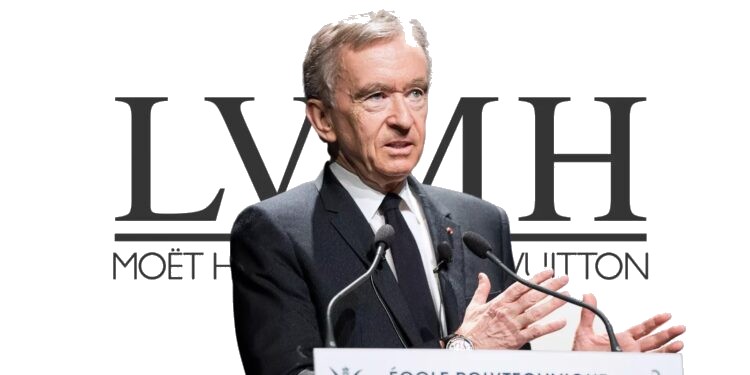In the realm of luxury and fashion, few names resonate as profoundly as Bernard Arnault and LVMH (Moët Hennessy Louis Vuitton). The French billionaire and business magnate, often hailed as the “wolf in cashmere,” has masterfully crafted an empire that stands as a testament to his visionary leadership and relentless pursuit of excellence.
The Rise of Bernard Arnault: A Visionary Leader
Bernard Arnault, born on March 5, 1949, in Roubaix, France, began his journey into the world of business at an early age. After graduating from the École Polytechnique with an engineering degree, Arnault joined his family’s construction business. However, his ambitions reached far beyond the construction industry.
In 1984, Arnault took control of Boussac, a near-bankrupt textile company that owned the iconic fashion house Christian Dior. This marked the beginning of his foray into the world of luxury goods, foreshadowing the creation of the LVMH conglomerate.
The LVMH Empire: A Tapestry of Luxury Brands
Under Arnault’s astute leadership, LVMH has grown into the world’s largest luxury-goods company, encompassing an unparalleled portfolio of prestigious brands. From iconic fashion houses like Louis Vuitton and Givenchy to renowned champagne producers like Moët & Chandon, Arnault has curated a collection of brands that symbolize opulence and style.
The empire extends beyond fashion and beverages, venturing into sectors such as cosmetics, watches, and jewelry. Brands like Sephora, Bulgari, and TAG Heuer have found a home within LVMH, creating a diverse and comprehensive luxury ecosystem.
Wealth Accumulation: The Arnault Formula
Arnault’s wealth accumulation is a reflection of his strategic approach to business. LVMH’s success lies not only in the quality and allure of its products but also in Arnault’s ability to identify and acquire undervalued luxury brands, breathing new life into them under the LVMH umbrella.
The company’s decentralized structure allows individual brands to maintain their unique identity and creative autonomy while benefiting from the synergies and economies of scale that come with being part of a larger conglomerate. This approach has proven instrumental in driving LVMH’s financial success and Arnault’s ascent on the global billionaires’ list.
Challenges and Controversies: Navigating the Luxury Landscape
Despite the undeniable success of LVMH, Arnault has faced challenges and controversies throughout his career. The luxury industry is not immune to economic downturns, and LVMH, like other companies, has had to navigate the complexities of a changing global market. Additionally, Arnault has faced criticism for issues such as labor practices and environmental impact, prompting calls for greater corporate responsibility within the luxury sector.
The Philanthropic Side: A Glimpse Beyond Business
While Arnault is widely recognized for his business acumen, he has also engaged in philanthropy. In 2019, he pledged a substantial sum to help rebuild the Notre-Dame Cathedral in Paris after a devastating fire. This move showcased his commitment to preserving cultural heritage and contributing to the well-being of society.
Bernard Arnault’s Enduring Legacy
Bernard Arnault’s journey from the family construction business to the helm of the world’s premier luxury conglomerate is a testament to his resilience, vision, and ability to navigate the intricate landscape of the luxury industry. The LVMH empire he has built stands not only as a monument to opulence but also as a symbol of entrepreneurial excellence and strategic leadership, securing Arnault’s place as one of the most influential figures in the world of business and luxury.



Recent Comments